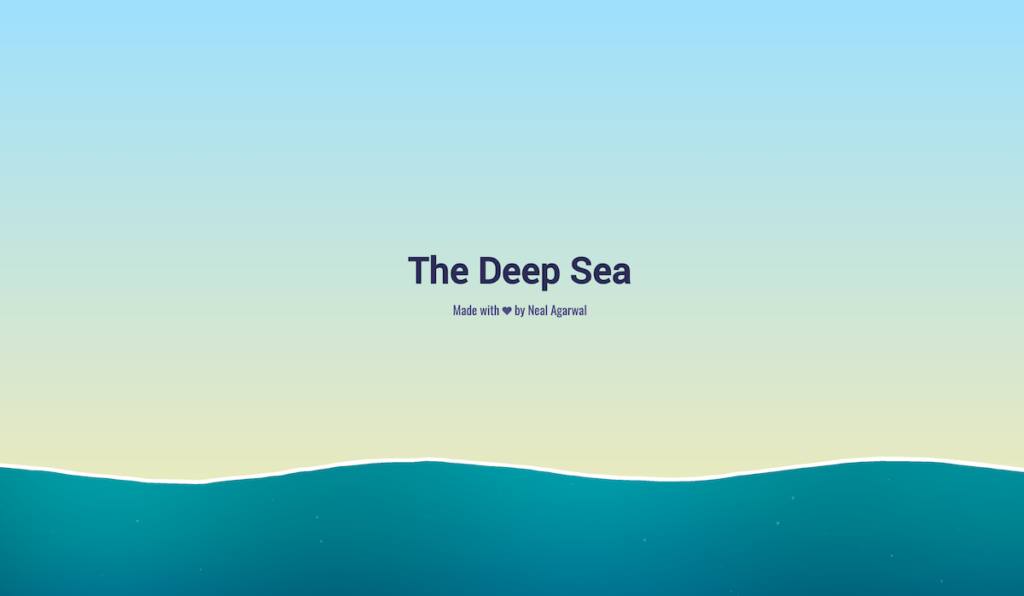
The Deep Sea

As detailed in the exquisite documentary Proteus, the ocean floor was until very recently a repository for the dreams of humankind — the receptacle for our imagination. But when the H.M.S. Challenger expedition surveyed the world’s deep-sea life and brought it back for cataloging by now-legendary illustrator Ernst Haeckel (who coined the term “ecology”), the hidden benthic universe started coming into view. What we found, and what we continue to discover on the ocean floor, is far stranger than the monsters we’d projected.
This spectacular site by Neal Agarwal brings depth into focus. You’ve surfed the Web; now take a few and dive all the way down to Challenger Deep, scrolling past the animals that live at every depth.
Just as The Long Now situates us in a humbling, Copernican experience of temporality, Deep Sea reminds us of just how thin of a layer surface life exists in. Just as with Stewart Brand’s pace layers, the further down you go, the slower everything unfolds: the cold and dark and pressure slow the evolutionary process, dampening the frequency of interactions between creatures, bestowing space and time for truly weird and wondrous and as-yet-uncategorized life.
Dig in the ground and you might pull up the fossils of some strange long-gone organisms. Dive to the bottom of the ocean and you might find them still alive down there, the unmolested records of an ancient world still drifting in slow motion, going about their days-without-days…
For evidence of time-space commutability, settle in for a sublime experience that (like benthic life itself) makes much of very little: just one page, one scroll bar, and one journey to a world beyond.
(Mobile device suggested: this scroll goes in, not just across…)
Learn More:
- The “Big Here” doesn’t get much bigger than Neal Agarwal‘s The Size of Space, a new interactive visualization that provides a dose of perspective on our place in the universe.
Join our newsletter for the latest in long-term thinking
Subscribe